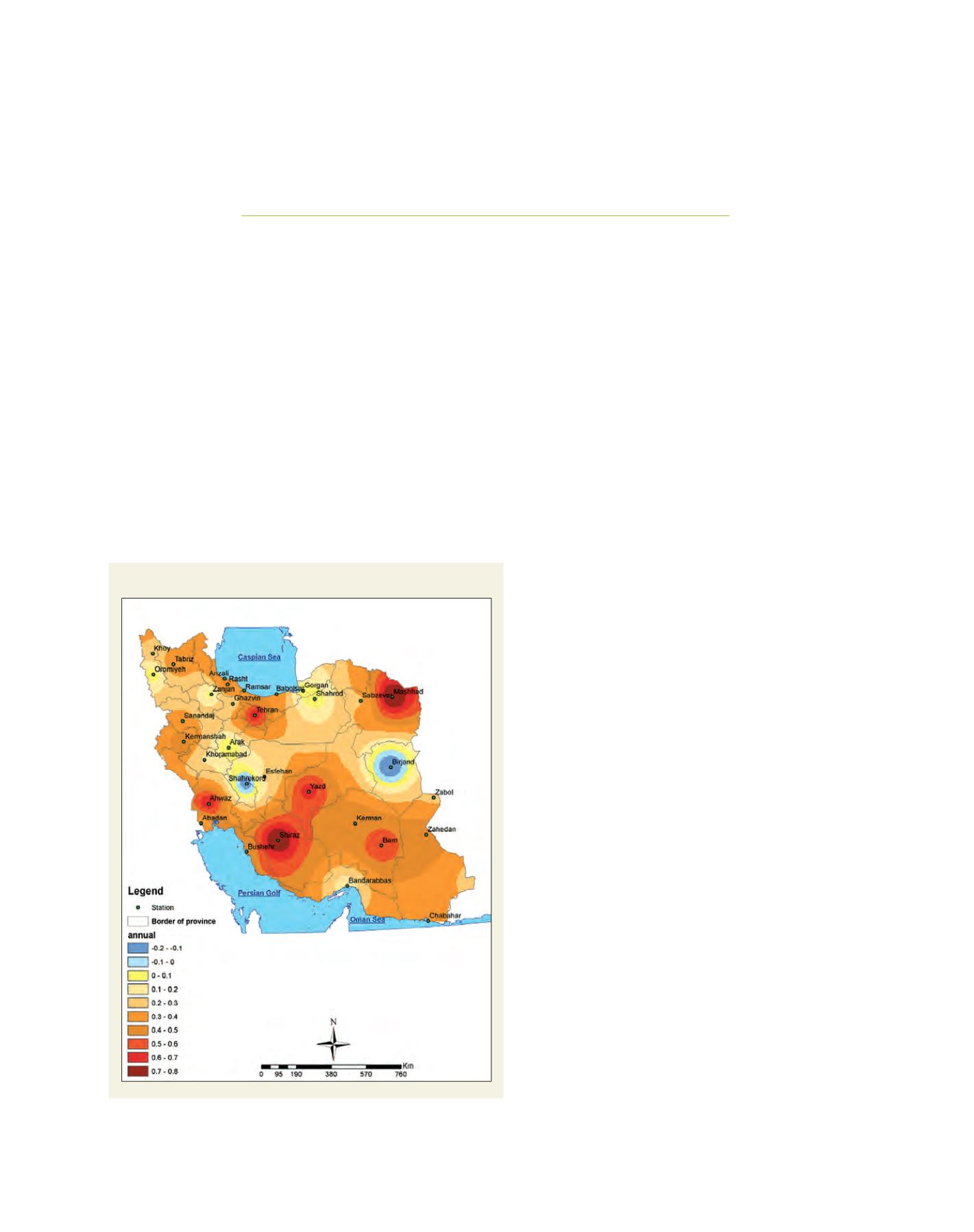

[
] 233
Enhancing adaptation to climate
change and variability in Iran
Dr A.M. Noorian, PR of Iran with WMO and First Vice President of WMO
O
ver the past few decades, Asia, the largest and most popu-
lous continent of the world, has witnessed increases in
surface temperature and rainfall variability, as well as
more frequent and intense extreme weather events.
1
Situated in
the southwest of Asia, Iran has been very much affected by these
trends.
Recent studies in Iran show that annual mean temperature anoma-
lies for the country have increased since records began in the 1950s.
In particular, results suggest a relatively rapid and steady warming
through the early 1990s. Seasonal series for Iran show a pronounced
warming from 1950 – especially for autumns and
summers. The trends for minimum temperature in
Shiraz and Mashhad have been 0.7 to 0.8ºC per decade.
Surprisingly some of the observed climate trends in Iran
are inconsistent with the global picture.
Negative trends for indices representing cold
maximum and minimum temperature extremes – such
as number of icing days, frost days, cold nights and cold
days – have been observed. Conversely, positive trends
for indices representing warm maximum and minimum
temperature extremes – such as summer days, tropi-
cal nights, warm nights and warm days – were also
observed in the region. The negative trends – obtained
with the Diurnal Temperature Range index – were
found to be greater than the positive trends. Indeed,
post-1990 many observational stations in Iran have
found no use for the Cold Spell Duration Index.
2
During the period 1950-2007, Iran experienced
decreasing trends in annual precipitation, with the most
affected area being the northwest of the country – which
saw a decline of 150 to 175 millimetres over 60 years.
Two-thirds of the country recorded a negative trend for
the number of days with precipitation greater than 20
millimetres. Although such results are mostly consistent
with IPCC findings, as well as the findings of a Middle
East regional study,
3
there are nevertheless local incon-
sistencies for areas such as the Zagros Mountains.
4
Besides warmer temperatures, Iran has also seen altera-
tions in other climatic parameters, with temporal and
spatial temperature patterns changing over recent decades.
Anomalies have also been observed, with Iran experienc-
ing a year of below normal temperatures in 2006.
The increasing frequency of extreme weather events
– such as heat waves and heavy rain precipitation – has
had adverse effects across Iran and the whole of Asia.
Heat waves in July 2003 and 2005 and cold waves in
early 2007 and 2008 had effects on both daily and horal
scale in Iran. Intensive heat and cold stress interrupts
various physiological processes in agricultural, damag-
ing crop and affecting cattle. The heat wave that affected
many parts of Iran during summer 2005 produced posi-
tive anomaly readings of more than 4ºC in July.
In southwest Asia, severe cold in December 2007
produced some of the lowest temperatures the region had
experienced in decades. Most parts of Iran registered 2
to 4°C and in some stations/parts even 4 to 8°C cooler
A
dAptAtion
And
M
itigAtion
S
trAtegieS
Source: Dr A.M. Noorian and F. Rahimzadeh: I. R. of Iran Meteorological Organization
(IRIMO) and Atmospheric Science and Meteorological Research Center (ASMERC)
Decadel trend of minimum temperature 1960-2005
















